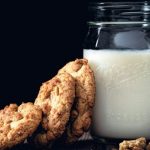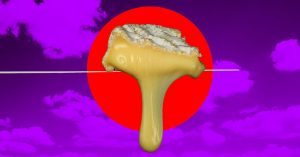
January U.S. dairy exports had the proverbial good news and bad news.
The bad news first. Milk equivalent exports were down 4.8% from a year ago.
The good news was that cheese sailings topped those of a year ago for the third month in a row, and with double-digit percentage growth for the first time since January 2023, according to HighGround Dairy.
Cheddar exports, however, were down 41.2%. Cheese imports were up 1.6%.
Nonfat and skim milk powder exports were down 14.0%, as international demand is poor. HGD says the biggest losses were due to reduced demand from Mexico, down 21.7%, followed by smaller purchases from the Philippines, Indonesia, Thailand, Colombia and China.
Butter sailings totaled just 5 million pounds, down 33.1% from a year ago. Sales to Canada were up 8.2% and made up almost 70% of the U.S. butter exports. Butter imports were up 30.9%.
Dry whey exports were up 2.9%, and demand for whey protein concentrates and isolates were robust, says HGD. Shipments to China plunged 23%, but the Daily Dairy Report points out that the decline was more than offset by greater exports to Mexico, Curacao and Japan.
Cheese dropping, butter still strong
Cash dairy prices were lower the first full week of March except for butter. The Cheddar blocks fell to a Friday close at $1.46 per pound, down 9 cents on the week and 32 cents below a year ago.
The barrels finished at $1.4875, 16.25 cents lower, 28.25 cents below a year ago, but still 2.75 cents above the blocks. Sales totaled 18 loads of block on the week and 13 of barrel.
The blocks tumbled 2.50 cents Monday on 5 sales and stayed put Tuesday, holding at $1.4350, lowest since Jan. 5.
The barrels fell 2.75 cents Monday on 12 sales and dropped 4 cents Tuesday on 4 more sales, dipping to $1.42, lowest since Jan. 5, and 1.50 below the blocks.
Cheese demand has been quiet for a number of cheesemakers through most of February, according to Dairy Market News. Barrel makers had been the exception, but that has cooled. Demand is slowly picking back up ahead of the spring holidays and some expect strong sales by the end of March.
CME butter recovered some of the previous week’s 9.25 cent loss, climbing to $2.85 per pound last Wednesday, then gave back 8.25 cents Thursday, only to regain 3.50 cents Friday and close at $2.8025, up 4.50 cents on the week and 47 cents above a year ago. There were 13 sales on the week.
The butter was unchanged Monday with no activity, then jumped 3 cents Tuesday on a trade, hitting $2.8325.
Some butter makers slowed their churns last week, and spot cream bids at a 1.15 multiple or thereabouts will “provide all they need,” says DMN. Butter remains available but at steady or higher pricing.
Cream is readily available throughout the West but some say it has started to tighten. Butter makers continue to run busy schedules to ensure supplies for later in the year and during summer maintenance projects. Retail demand is strong to steady and Canadian demand is steady.
Grade A nonfat dry milk fell to $1.1475 last Thursday, lowest since Sept. 20, 2023, but was bid up Friday to $1.17, down 2.75 cents on the week and a half-cent below a year ago on 7 sales for the week.
The powder was offered a quarter-cent lower Monday but a trade Tuesday pulled it back up a quarter-cent, to $1.17.
Dry whey, after dropping almost a dime the previous week, suffered an additional 1.50 cent loss last week, closing at 41 cents per pound, lowest since Jan. 18, and 3.25 cents below a year ago. There were no sales reported on the week.
Milk estimate lowered
The Agriculture Department lowered its milk production forecast in its fifth consecutive World Agriculture Supply and Demand Estimates report, citing a smaller dairy cow inventory and slower growth in output per cow.
2024 production and marketings were projected at 227.3 billion and 226.3 billion pounds, respectively, down 900,000 pounds on both from last month’s estimate. If realized, both would be up 900,000 pounds or 0.4% from 2023.
Cheese is expected to average $1.71 per pound in 2024, up 2 cents from last month’s estimate, and compares to $1.7593 in 2023 and $2.1122 in 2022
Butter was projected to average $2.80 per pound, up 3 cents from last month’s estimate and compares to $2.6170 in 2023 and $2.8665 in 2022.
Nonfat dry milk will average $1.21 in 2024, down 2.50 cents from a month ago and compares to $1.1856 in 2023 and $1.6851 in 2022.
The dry whey average was projected at 45 cents per pound, down 3 cents from a month ago and compares to 36.18 cents in 2023 and 60.57 cents in 2022.
The Class III milk price will average $17.15 per hundredweight in 2024, up a nickel from last month’s estimate and compares to $17.02 in 2023 and $21.96 in 2022.
The Class IV average, at $20.10, is up a dime from a month ago and compares to the 2023 average of $19.12, and $24.47 in 2022.
The WASDE lowered world ending stocks of corn and soybeans but left U.S. stocks unchanged. The season-average corn price was lowered to $4.75 per bushel. Global coarse grain production was forecast 2.7 million tons lower to 1.5 billion.
What if demand returns?
StoneX broker Dave Kurzawski analyzed the January Dairy Products report in the March 11 “Dairy Radio Now” broadcast and said the weak Cheddar production was a big surprise and hard to believe that prices were where they were in January. The last time Cheddar output was down that much, he said, was December 2009, down 8%.
The lower cheese production moved some fat and protein to butter and powder production, he said, which was higher than expected. The Cheddar data tells him that cheese demand was “worse than we thought.” “Exports may have helped a little,” he surmised, “but domestic demand must have been awful.”
If demand returns, however, he warned we won’t have an overhang in the market and it could mean tremendous volatility. “U.S. cheese manufacturers are doing a great job of not over producing, with demand being lackluster the past few months.” That may have kept prices higher than were they otherwise would have been, he said, and “if demand returns this market is going to rock,” he concluded.
Weaker Pulse prices
Tuesday’s GDT Pulse saw 4.4 million pounds of product sold, up from 4.28 million on Feb. 27, with 100% of the total offered sold.
Contract 2 whole milk powder was down 1.0% from the previous GDT event and Contract 2 skim milk powder was up 0.2%. From their highs in February, whole milk powder is down 6.2% and skim milk powder is down 6.5%, according to StoneX.
You can now read the most important #news on #eDairyNews #Whatsapp channels!!!
🇺🇸 eDairy News INGLÊS: https://whatsapp.com/channel/0029VaKsjzGDTkJyIN6hcP1K






















